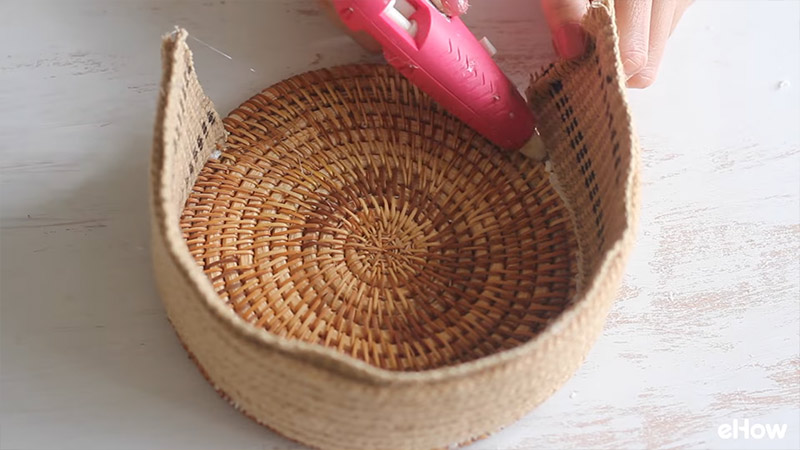Straw purses have a charming, natural appeal that complements both summer dresses and casual outfits. But over time, these bags can lose their shape, especially if they’re stored improperly or exposed to moisture.
Reshaping a straw purse is easier than you might think, and with the right tools and techniques, you can restore it to its original beauty.
This guide will walk you through each step to effectively reshape your straw purse, preserving its quality and longevity.

Understanding the Nature of Straw Material
To reshape a straw purse effectively, it’s essential to understand what you’re working with. Straw bags are typically made from natural materials like seagrass, raffia, or rattan, which are flexible but also susceptible to bending and deformation.
Key Properties of Straw:
- Porous and Absorbent: Straw easily absorbs moisture, making it prone to warping in humid conditions.
- Durable but Delicate: While sturdy, straw can crack or break if reshaped aggressively.
- Organic Texture: Its fibers can weaken over time if not properly cared for, especially with moisture exposure.
Key Techniques to Reshape a Straw Purse
There are multiple methods to reshape a straw purse, depending on the level of deformation. Here are the most effective, time-tested techniques:
The Steam Method
The steam method works well for straw bags that have minor dents or warping. This process uses moisture to soften the straw fibers, making them more pliable.
Steps:
- Prepare Your Work Area: Ensure you have access to a steamer or boiling water and a safe place to handle the steam.
- Apply Steam Carefully: Hold the purse approximately 12–18 inches away from the steam source and move it in slow, circular motions for even steaming. Avoid prolonged exposure as excess moisture can weaken the fibers.
- Shape the Purse by Hand: Once the straw becomes flexible, gently reshape it with your hands.
- Let it Dry Naturally: Allow the bag to dry in a well-ventilated area to set the new shape. Avoid direct sunlight as it can make the straw brittle.
Pros: Quick, effective for minor dents. Cons: Risk of overexposure to steam leading to weakened straw.
The Towel-Stuffing Technique
For bags that have completely lost their shape, this technique can provide structural support as the straw resets.
Steps:
- Dampen a Towel: Use a slightly damp towel to avoid oversaturating the purse.
- Fill the Purse with the Towel: Place the damp towel inside the purse, pushing it into any corners or misshapen areas to restore form.
- Allow to Dry Naturally: Leave the towel in place and let the purse air dry, allowing the straw to reset around the towel’s shape.
Pros: Low risk, maintains structural integrity. Cons: Takes longer to dry and reshape.
The Ice Pack Method
When dealing with specific, hardened areas, the ice pack method can be an ideal solution to soften and reshape targeted spots.
Steps:
- Place Ice Pack on the Spot: Wrap an ice pack in a thin cloth and press it against the area needing reshaping.
- Gently Reshape: Once the straw feels more pliable, use your hands to reshape it to the desired form.
- Let the Purse Air Dry: After reshaping, place the purse in a ventilated area to allow the fibers to set.
Pros: Ideal for specific areas, precise control. Cons: Less effective for complete reshaping.
Additional Tips for Maintaining the Shape of a Straw Purse
Once reshaped, following these maintenance tips can help your straw purse retain its form and beauty.
Store Properly
- Avoid Humidity: Moist environments can lead to mold growth and distortion. Keep your straw purse in a dry area.
- Use Dust Bags: Place your purse in a breathable dust bag to protect it from dust and maintain its shape.
Avoid Overloading
- Lighten the Load: Straw purses aren’t designed for heavy items. Overloading can stretch and warp the material.
- Distribute Weight Evenly: When placing items in the bag, ensure even weight distribution to prevent uneven wear.
Use Inserts
- Shape-keeping Inserts: Fabric inserts or small pillows inside the purse during storage can help retain the shape over time.
FAQ Section
Q1: Can I reshape my straw purse if it has mold?
Yes, but mold needs to be removed first. Wipe the affected area gently with a damp cloth and a small amount of vinegar. Allow it to air dry completely before reshaping.
Q2: Is it okay to submerge my straw purse in water to reshape it?
No, submerging the purse can damage the material and weaken the straw fibers, leading to warping and possible breakage. It’s best to use controlled moisture like steam or a damp towel.
Q3: How often should I reshape my straw purse?
Only reshape when necessary, such as if the purse has been stored improperly or has lost shape from use. Overdoing it can weaken the straw fibers over time.
Q4: Are there specific straw types that are easier to reshape?
Yes, purses made from more flexible materials like raffia are generally easier to reshape compared to sturdier types like rattan.
Conclusion
Reshaping a straw purse can breathe new life into your favorite accessory. By understanding the material, using safe reshaping techniques, and following preventative maintenance, you can keep your straw purse looking stylish for many seasons.
Whether you prefer the steam, towel-stuffing, or ice pack method, each approach offers a way to restore the purse’s original form and ensure it remains a staple in your wardrobe.
Leave a Reply